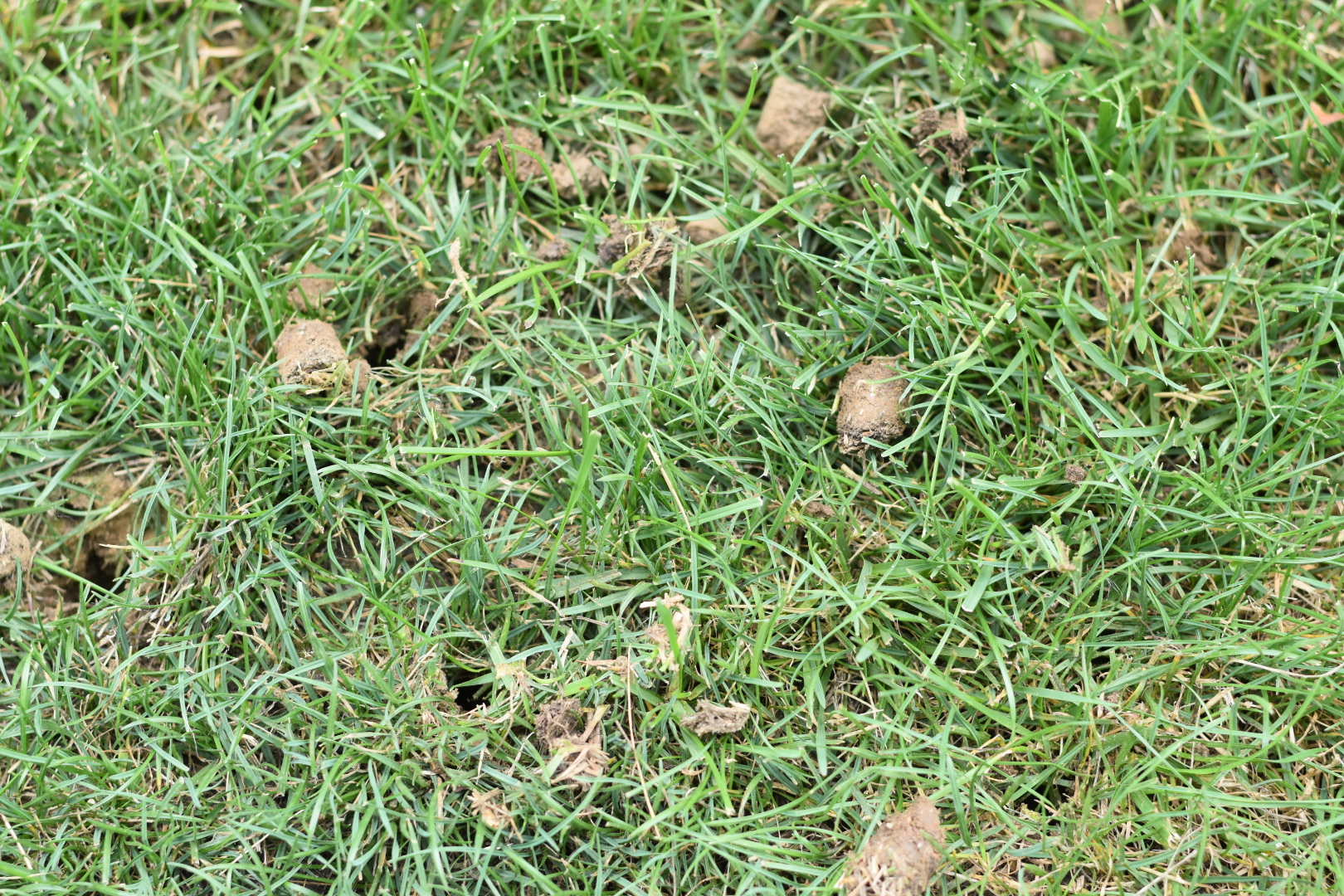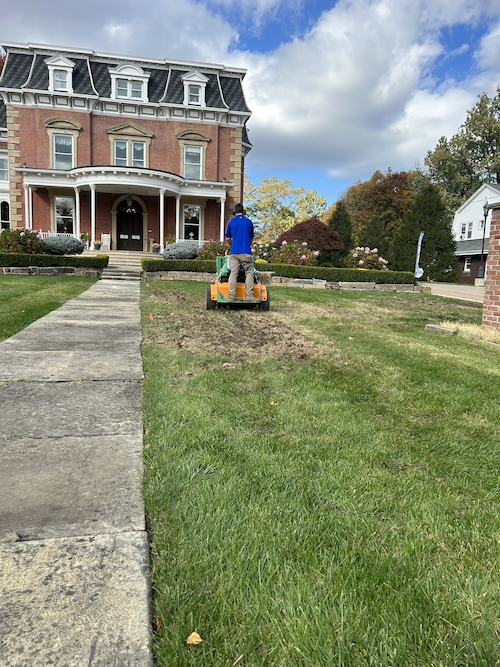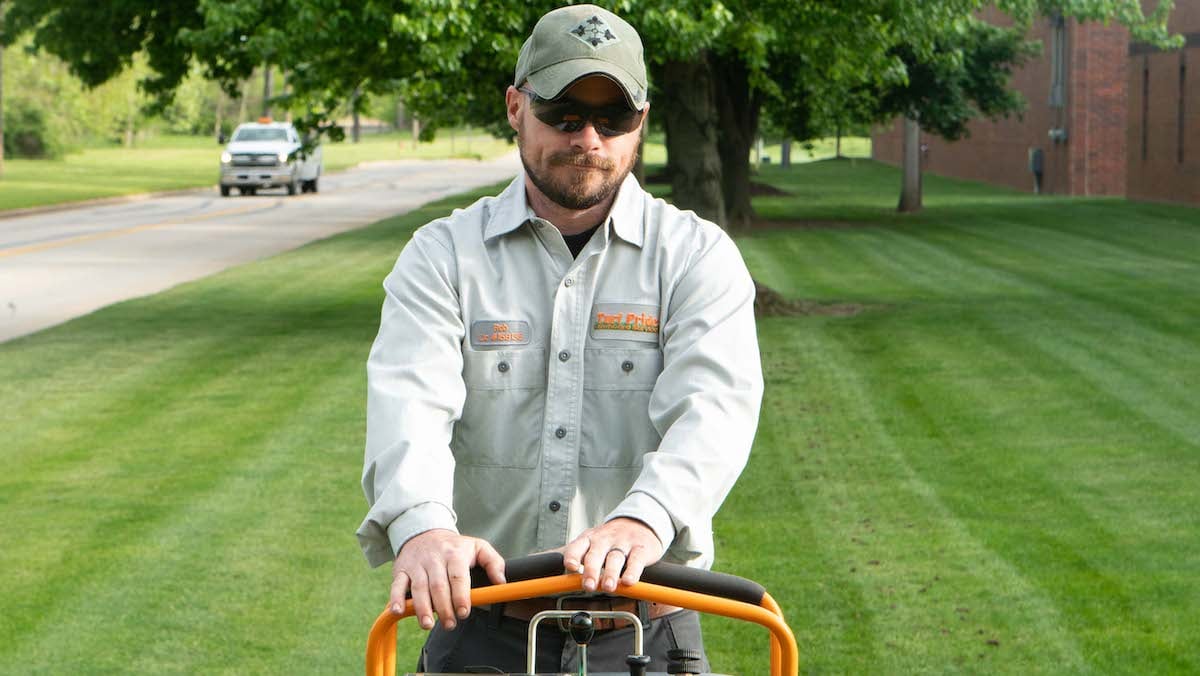
What’s Better? Liquid Aeration or Core Aeration
Your lawn is a part of your home. It’s a source of pride for you. Having that thick, green, well-manicured lawn says you care about your property. It welcomes you home and welcomes guests who come to your door.
/Live%20Website%20Images/customer-front-lawn.jpg?width=5168&height=2912&name=customer-front-lawn.jpg)
Getting this amazing, vibrant lawn takes some work – proper mowing, adequate water, a healthy soil, correct and regular fertilization, and annual aeration.
You might not know that there are two types of lawn aeration services: core aeration and liquid aeration. Core aeration involves creating small holes in your lawn with an aerator and liquid aeration uses liquid to break up the soil.
Let’s review liquid aeration vs. core aeration and talk about their pros and cons so you can understand how each could benefit your Northeast Ohio lawn.
Aeration Basics
Before we dive into the two types of aeration, you might be wondering what aeration is, in the first place, and what it can do for your lawn.
We’ll answer some common questions about lawn aeration so you can better understand how it can help your lawn.
What is Lawn Aeration?
A healthy lawn needs healthy soil.
Ensuring your soil can absorb nutrients through fertilization and can get oxygen for the roots to grow is essential.
Lawn aeration opens up the soil, giving oxygen, water, and nutrients a chance to penetrate to the lawn roots. The process actually improves your soil quality.
/Live%20Website%20Images/aeration%20holes%20plugs.jpg?width=1800&height=1350&name=aeration%20holes%20plugs.jpg)
How Does Soil Become Compacted?
When the spaces between soil particles close up, that’s when soil compaction occurs.
This prevents water, oxygen, and nutrients from getting through the now dense soil.
This can happen in a few ways. Decomposing organic matter can form a thatch layer over time, blocking sun, water, and nutrients from entering the soil. Lawn aeration can break up the thatch.
Lots of foot traffic, as well as mower traffic or rainfall, can also add up and create soil compaction. Again, aeration can alleviate this compaction.
When Do You Know You Need Lawn Aeration?
There are some signs you might need lawn aeration. Aerating annually in fall is a good best practice, but if you notice some of theses signs it might mean you need aeration:
- Excessive water runoff.
- Bare areas.
- Hardened soil that can’t be broken up with a shovel.
- Thatch buildup.
- Pooling water on your lawn.
Liquid Aeration vs. Core Aeration: Understanding the DIfferences
Now that you know what aeration is and what it can do for your lawn, you probably are wondering which method of aeration is best for you.

Here, we’ll talk about liquid aeration vs. core aeration.
Liquid Aeration Pros and Cons
Liquid aeration is a method of lawn aeration that uses specially formulated liquids to penetrate and soften soil, creating pathways for water, nutrients, and air.
While the process is said to be neater than core aeration in that it doesn’t leave soil plugs on the lawn to decompose, it does take longer to make an impact on reducing soil compaction.
Also, landscape experts say there is no indication that any of these products have ever been scientifically evaluated for effectiveness. They say there is no “chemical” substitute for physical remediation of soil compaction.
Core Aeration Pros and Cons
Core aeration is a method of lawn aeration that uses a lawn aerator to create pockets in the soil to enable water, nutrients, and air to enter.
It’s been proven as an eco-friendly service that reduces fertilizer runoff, improves water retention, limits weed growth, quickly improves lawn appearance, and encourages healthy root growth.
Temporarily, core aeration does leave soil plugs on your lawn for approximately two weeks after performing the service. This may be a small price to pay in aesthetics for the big benefits core aeration produce. In fact, those plugs will begin a beneficial breakdown process that aids in thatch reduction due to the microbes in the soil plugs eating away at your harmful thatch layer. Typically when we come out for the next treatment a month or so later, we can barely see the plugs.
You also have to flag irrigation heads and shallow underground lines to ensure aeration doesn’t damage any of these other things in your yard.

Which Lawn Aeration Service Should You Choose?
Both liquid and core aeration aim to break up compacted soil and enable vital nutrients to penetrate deep into the ground.
Your preference for either lawn aeration service will depend on your budget, time, and the long-term benefits you would like for your lawn.
Why Choose Core Aeration With Turf Pride
Core aeration is a faster lawn aeration process than liquid aeration, and you’ll start to see the benefits almost immediately. One of the major benefits of core aeration is its simplicity – you just pull small plugs of dirt from your lawn that you can then let decompose and add additional nutrients to your lawn.
Turf Pride offers overseeding as part of its aeration services in autumn since fall is the ideal time for seed germination – when you have natural pockets in your soil for the seed to settle into and grow. Overseeding also helps you obtain a thicker lawn. Professional aeration companies use clean, quality seed, ensuring fewer weeds and better grass.
At Turf Pride, we believe in the benefits of traditional core aeration. We believe it’s one of the best things you can do for your lawn every fall. We also offer “liquid aeration” but prefer to more adequately label this as our Soil Booster program. We do not offer this to every lawn, however, simply because we are already adding good bio-stimulants with our organic nutrient-rich treatments.
/Technician%20on%20machine%20with%20turf%20pride%20sign%20up%20front%20customer%20front%20yard.jpg?width=5168&height=2912&name=Technician%20on%20machine%20with%20turf%20pride%20sign%20up%20front%20customer%20front%20yard.jpg)
Why do we believe traditional core lawn aeration is so effective? This process pulls out thousands of plugs throughout the lawn, which allows the de-compaction process to take place. The holes throughout the yard allow air, water, and nutrients to easily get down to your lawn's root system 3 to 4 inches down – right where it's needed. And, remember, the holes from core aeration create the perfect seed-to-soil contact for seed germination.
Still wondering what to do when it comes to lawn aeration? Give Turf Pride a call. We are happy to assist you as you compare programs and prices, so you can make the best decision for you. .
Want to improve your lawn’s health and create a thicker, greener lawn? Turf Pride can help. Get started today with a free quote. Together, we’ll customize a plan that gives you the most attractive Northeast Ohio lawn on the block.


